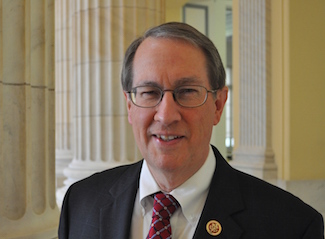The Innovation Act of 2015 – essentially the same bill that was left for dead in the Senate in 2014 – is currently pending again in the House, and, by many accounts, is likely to pass both the House and the Senate in 2015. The Innovation Act includes provisions aimed at reducing costs associated with substantively meritless patent cases, including, among others: (i) heightened pleading requirements, (ii) limits on discovery until after a claim construction ruling, and (iii) a presumptive award of attorneys’ fees to the prevailing party, including possible “joinder” of “interested parties.” While existing pleading requirements and discovery in patent litigation are both areas that are in need of modification, the specific proposals of the Innovation Act fail to strike the right balance in view of real world considerations. The proposed presumptive award of attorneys’ fees and joinder provisions, on the other hand, threaten to significantly erode the value of patents as a vehicle for protecting and encouraging innovation.
Heightened Pleading Requirements
Requiring more specific pleading in patent complaints is long overdue, but the proposed requirements go too far. If not for Fed. R. Civ. P. 84 and associated Form 18, the Supreme Court’s decisions in Twombly and Iqbal would have required more specific pleading in patent cases years ago. The Supreme Court recently approved the elimination of Rule 84 (and Form 18), to take effect on December 1, 2015, thereafter requiring complaints for direct patent infringement to satisfy the Twombly/Iqbal “plausibility” standard. But the Innovation Act would require a level of pleading beyond the “plausibility” standard of Twombly and Iqbal, namely that patent complaints include a claim chart illustrating the theory of infringement for each asserted claim against each accused product. This requirement is unduly onerous for plaintiffs because it fails to recognize that, while a plaintiff must satisfy his/her pre-filing due diligence with respect to infringement, the full extent of the infringement may be difficult to determine solely from publicly-available information and without formal discovery where there are multiple infringing products and/or many dependent claims. Requiring a complaint to include a detailed claim chart for each asserted independent claim would strike the right balance between the justified need for a detailed complaint and the burden to a plaintiff of developing its full infringement case for every claim solely from publicly-available information.
Discovery Reform
The Innovation Act proposes that all discovery, except discovery necessary to construe the meaning of claim terms, be stayed until after a claim construction ruling is issued by the Court. This provision is purportedly aimed at reducing discovery costs by achieving early settlements based on early claim constructions. But it fails to recognize the fact that, without at least some understanding of the competing infringement and invalidity positions, identifying which claim terms to construe, let alone their proper constructions, is challenging for both parties. In most cases, only after the parties’ basic infringement and invalidity positions are set forth, and some “core” discovery on the accused products and prior art is exchanged, can a meaningful claim construction exercise be had. Moreover, many courts do not issue claim construction rulings for many months – sometimes extending beyond a year – after the claim construction briefing and arguments. Without a change in the way many courts issue claim construction opinions, patent cases would sit idle during these periods, which would unnecessarily extend the already lengthy average duration of a patent case. As the PTO acknowledged during the April 14, 2015 Legislative Hearing on the Innovation Act, in most cases, the proposed stay on discovery “would not avoid discovery, but simply delay or duplicate it.”
Many major patent jurisdictions already have local patent rules that include early exchanges of infringement and invalidity contentions, along with basic discovery on accused products and prior art, before a relatively early claim construction process. A uniform adoption of this approach would be more efficient than staying all discovery until after a claim construction ruling.
Presumptive Fee Shifting to the Prevailing Party
Strong patent protection is almost universally considered critical to robust innovation. Venture capital and private investment in new technology-based businesses heavily depend upon it. Yet, the Innovation Act is positioned to significantly reduce the value of patents by making the risk of enforcement prohibitively high.
The proposed presumptive fee shifting provision upends the traditional American Rule for attorneys’ fees by requiring a district court judge to award reasonable attorneys’ fees and expenses to the prevailing party unless the court finds that the position and conduct of the nonprevailing party was reasonably justified in law and fact or under other special circumstances that would make such an award unjust. Additionally, individual “interested parties” who have a financial interest in the patent may be “joined” as personally liable to satisfy any award of attorneys’ fees and expenses if the party asserting the patent is insufficiently funded to pay the award. In effect, the nonprevailing party, having just lost the case on the merits, would have to demonstrate to the judge that its positions were nonetheless “reasonably justified” to avoid paying attorneys’ fees and expenses. And if the losing party is the plaintiff, “interested parties” may be personally liable.
The presumptive fee shifting provision of the Innovation Act is significantly more aggressive than the current fee shifting provision of 35 U.S.C. §285, even after the Supreme Court lowered the standard last year in Octane Fitness. Currently, §285 provides that a court may award reasonable attorney fees to the prevailing party in “exceptional cases.” Under Octane Fitness, an “exceptional case” is one that stands out from others with respect to the objective strength of the case, regardless of a party’s subjective intent. There is currently no “joinder” provision for “interested parties.”
The presumptive fee shifting provision of the Innovation Act would significantly decrease the value of many valid patents because it would reduce the likelihood that patent owners would enforce them, even where the alleged infringement would have substantial merit. The value of a patent is directly related to the practical ability of the owner to enforce it against infringers. It is exceedingly rare for a company to voluntarily pay a reasonable royalty to a patent owner or go through the effort and expense to design around a patent where it is perceived that the patent owner has no viable way to enforce the patent. Presumptive fee shifting would reduce the practical ability of some patent owners to pursue meritorious infringement cases because the downside risk of paying attorneys’ fees and expenses to the prevailing party would be, in many instances, simply too great to bear, especially for smaller companies where “interested parties” could be subject to personal liability. After all, it is not always possible to predict which positions a judge will find to be “reasonably justified,” particularly after these same positions were just rejected by the judge or jury on the merits. Against this backdrop, the incentive for potential defendants to ignore patents and essentially dare patent owners to enforce their patents would increase. As a result, the value of a substantial class of valid patents would be eroded.
Proponents of presumptive fee shifting say that it encourages patent owners to refrain from litigating meritless cases. Of course, discouraging meritless cases is desirable and important. But so is maintaining the value of patents. The question is one of where the proper balance lies. Since the Octane Fitness decision last year, the number of post-judgment awards of attorneys’ fees has increased substantially. Undoubtedly, this has resulted in an increased incentive for patent owners to refrain from bringing meritless cases. Has it been enough? The jury is still out. But the proposed presumptive fee-shifting pushes the pendulum much further and is likely to discourage not only the pursuit of meritless cases, but also a number of meritorious cases, especially for small companies where the potential for personal liability to “interested parties” looms large.
It has only been one year since Octane Fitness re-defined what it means for a case to be “exceptional.” We should let the results of that significant change in the law play out to see if the right balance between discouraging meritless cases and not discouraging meritorious cases is reached. Raising the risk of enforcement for patent owners even higher at this juncture could result in adverse unintended consequences for the value of patents and the innovation that they protect.

![[IPWatchdog Logo]](https://ipwatchdog.com/wp-content/themes/IPWatchdog%20-%202023/assets/images/temp/logo-small@2x.png)


![[Advertisement]](https://ipwatchdog.com/wp-content/uploads/2024/04/UnitedLex-May-2-2024-sidebar-700x500-1.jpg)
![[Advertisement]](https://ipwatchdog.com/wp-content/uploads/2024/04/Artificial-Intelligence-2024-REPLAY-sidebar-700x500-corrected.jpg)
![[Advertisement]](https://ipwatchdog.com/wp-content/uploads/2024/04/Patent-Litigation-Masters-2024-sidebar-700x500-1.jpg)

![[Advertisement]](https://ipwatchdog.com/wp-content/uploads/2021/12/WEBINAR-336-x-280-px.png)
![[Advertisement]](https://ipwatchdog.com/wp-content/uploads/2021/12/2021-Patent-Practice-on-Demand-recorded-Feb-2021-336-x-280.jpg)
![[Advertisement]](https://ipwatchdog.com/wp-content/uploads/2021/12/Ad-4-The-Invent-Patent-System™.png)






Join the Discussion
5 comments so far.
Mike Schulze
May 29, 2015 12:28 pmGlenn,
Great points!
Keep them coming, hopefully, the House and Senate will take notice.
Edward Heller
May 28, 2015 10:28 amO’Malley made a speech last year on this bill that is printed in the AIPLA QJ. She questions the wisdom of congress treading so heavily on court procedure. She raises the specter that such a degree of encroachment is unconstitutional.
Expect just such a challenge if congress passes such legislation. It is unprecedented in American history.
Anon
May 27, 2015 10:52 pmAgree Paul – the best answer is to make patent rights stronger, more certain, and easier to enforce.
Paul Morinville
May 27, 2015 11:40 amWe passed the AIA just 4 years ago and some say the problem is worse now. For the sake of argument, I’ll agree that it is worse even though I dispute that.
The AIA raised cost for both the inventor and the infringer, and the problem got worse. Now we are going to raise the costs again and hope the problem will be fixed.
The real reason we have trolls is there are no injunctions and no treble damages thus it is a CEO’s duty to steal patented inventions and massively commercialize them, then litigate the inventor into oblivion because of the high cost.
Big companies steal it and inventors can’t fight the big companies. Instead they are forced to sue end customers because they settle because the cost is too high to fight.
What is Congress going to do? Further increase cost for both sides. This will make the problem worse. We are going the wrong way.
EG
May 27, 2015 07:51 am“The question is one of where the proper balance lies.”
Glenn,
Absolutely on target, and why the misnamed “Innovation Act” is so egregious. The proverbial “use a sledgehammer to squash a nat” approach.